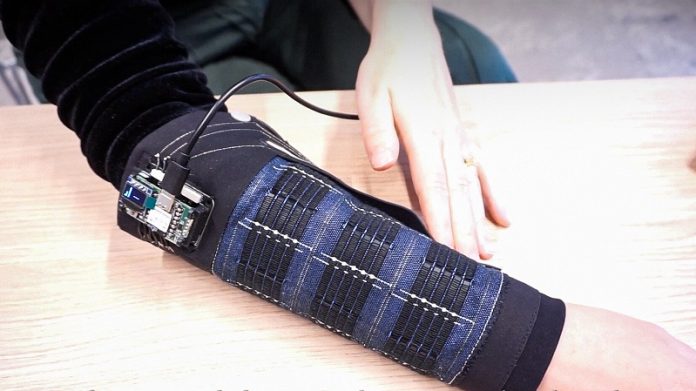
Imagine clothes that help you lift heavy objects or give you a hug from someone far away.
This might sound like science fiction, but researchers in Sweden are working on making it a reality.
This new technology, called “textile muscles,” could be built into clothing to provide extra strength and even help people with disabilities navigate their environment.
The idea of textile muscles comes from researchers at Linköping University and the University of Borås in Sweden.
“When we think of exoskeletons, we usually picture a bulky robotic suit,” says Edwin Jager, a professor at Linköping University.
“But with textile muscles, long underwear woven from special yarn could give you extra strength for heavy lifting.”
In 2017, Jager’s team, along with researchers at the University of Borås, discovered that an ordinary thread coated with conductive plastics (PEDOT and polypyrrole) could stretch and shrink when an electrical current is applied.
This breakthrough attracted significant attention. However, a single thread wasn’t strong enough for practical use, so the researchers connected multiple threads together to create a fabric with much higher strength.
Carin Backe, a Ph.D. student at the University of Borås, explains that textiles are a big part of our lives.
“We are in contact with textiles 99 percent of the time—the clothes we wear, the sheets we sleep in, even the car seats we sit on,” she says. “There’s huge potential to create smart textiles that can help people in their daily lives.”
One exciting application of textile muscles is in haptic communication, which involves sending information through touch. In a recent project called Weafing, researchers from several universities and companies developed a sleeve with textile muscles that can provide haptic feedback.
For example, if one person strokes their sleeve, another person wearing a connected sleeve can feel that touch.
This technology could be used for social touch at a distance, but it also has practical applications. For the visually impaired, it could help them navigate by providing information about their surroundings through their clothing.
Jager believes this technology could also enhance virtual reality (VR) experiences. “Imagine feeling pressure on your body when you get shot in a game,” he says. “The gaming industry has a lot of potential for this technology, and it could help commercialize it initially.”
The next step for researchers is to increase the weight that each textile muscle can lift. The long-term goal is to create entire items of clothing with integrated textile muscles, providing a soft exoskeleton that isn’t visible on the outside.
This could be especially useful in healthcare, helping caregivers avoid injuries from lifting patients and giving older adults a boost when they need it.
Construction workers and others who do a lot of heavy lifting could also benefit from this technology. “In the care of older persons, it would be an excellent option both for the staff and the older persons who need help,” says Jager.
The Weafing project has been completed, but the research continues. The Erling Persson Foundation has provided a grant to support further development.
Nils-Krister Persson, a senior lecturer at the University of Borås, believes they have only scratched the surface of the technology’s potential. “We have muscle fibers in our bodies, and who better to understand fibers than the textile industry?” he says. “There is much we can learn from nature and apply to textiles.”
According to Jager, development is progressing rapidly. “In 2017, we had a small yarn thread that only worked in liquid,” he says. “Now, we have a fully functional prototype sleeve. It’s fantastic how far we’ve come in just seven years.”
With continued research and development, we may soon see smart clothes with textile muscles becoming a part of our everyday lives.



